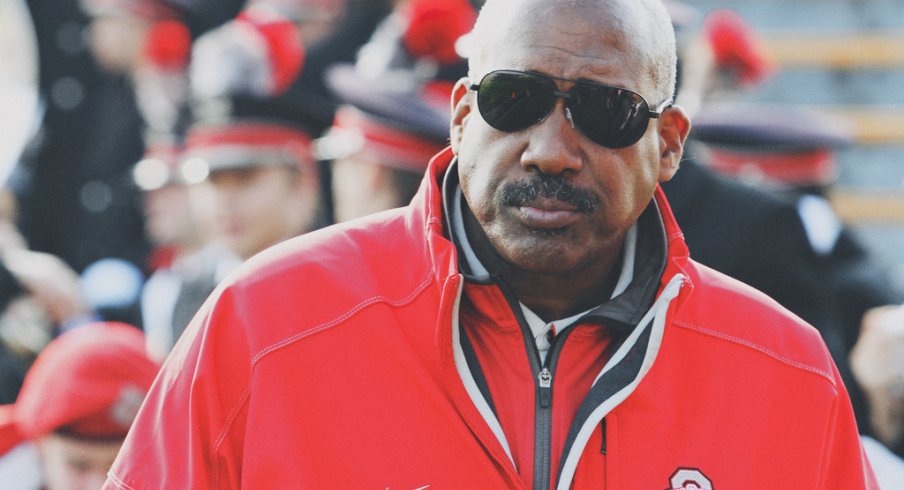Grand Valley State was once the dominant Division II college football program. In Division III, Mount Union has passed the torch to Wisconsin-Whitewater. Might Ohio State and Alabama one day control Division IV?
SEC commissioner Mike Slive hopes so. Well, maybe not the Ohio State part. The Mouth of South let fly a string of promises if the Power Five conferences aren’t given autonomy on setting rules, which includes benefits for student-athletes.
At the SEC spring meetings, Slive said the conference was prepared to pull out of Division I and form their own division with its own rules. They would be able to establish guidelines on offseason coaching, financial aid and transfers, among other hot topics.
It could be a world where Ohio State only plays programs of equal size and stature, the offseason could look entirely different than the current structure and players would receive an increased stipend.
There are valid points for the autonomy argument, but Slive’s message reeked of a disgruntled child who takes his baseball bat and glove and storms off for his house, leaving his friends at the diamond.
The NCAA’s board of directors will vote in August on an autonomy plan for the 65 schools that comprise the five major conferences – SEC, Big Ten, Big 12, Pac-12 and ACC. Slive’s ultimatum was in preparation for a “no” note. He added that the SEC isn’t in favor of splitting off, but the status quo is unacceptable.
“We want the ability to have autonomy in areas that have a nexus to the well-being of student-athletes,” Slive said. “I am somewhat optimistic it will pass, but if it doesn’t, our league would certainly want to move to a Division IV. My colleagues, I can’t speak for anybody else, but I’d be surprised if they didn’t feel the same way.”
In conversations with Eleven Warriors last week, Virginia Tech head coach Frank Beamer and Navy head coach Ken Niumatalolo each said they envision a day when the Power Five splits away. The impact would be far reaching.
Financial implications are at the top of the list. Division IV schools would be in line for a hefty payday, with TV contracts likely soaring. Something that wouldn’t be lost is the NCAA men’s basketball tournament and the College World Series. A Power Five power play would only affect football.
“We would want to be part of the basketball tournament and all of the championships,” Slive said. “We don't want to disrupt the championships, even if we went to Division IV.”
At the heart of the argument is the major conferences’ hope for providing student-athletes with an extra stipend. Last year, a proposed $2,000-per-year stipend was shot down after smaller schools shouted from on high saying big schools had an unfair advantage thanks to better resources. No one will dispute that Ohio State is better suited to hand out money than Bowling Green.
Still, providing student-athletes with a stipend based on the amount of their tuition (cost of attendance) remains one to the most passionately debated issues in intercollegiate athletics.
“If you’ve used [student-athletes] to promote whatever, they deserve something from that,” Beamer said. “The thing about if you start paying, you have to keep it on an even playing field. You don’t want it to get to a point where one school gets a tremendous recruiting advantage because they can pay whatever over another school. But I think a stipend makes perfect sense.”
Ohio State athletic director Gene Smith is in favor of the Power Five having the capability to give athletes stronger healthcare and a larger check. For Ohio State, that would be $3,340 for in-state students and $4,786 for out-of-staters. The crux of the debate is, of course, about money. Isn’t that the basis for every discussion in college sports?
The amount paid out by universities and their athletic departments for cost of attendance scholarships would be between $500,000 and $1 million per year. That’s a day’s work for some heavy hitters and angst inducing for schools in the MAC, Sun Belt and other lesser conferences.
As change swirls in college sports, there also remains a series of lawsuits that could greatly impact the economics of the NCAA. Today begins the anticipated Ed O’Bannon trial, where hundreds of millions of dollars could be at stake depending the case’s outcome. Northwestern’s unionization effort also hangs over the proceedings.
Florida president Bernie Machen went into full hyperbole mode, deeming it a “crisis” if the big schools aren’t permitted to provide cost of attendance stipends. It harkens back the days of yesteryear – or last year – when Big Ten commissioner Jim Delany was equally irate about changes in the NCAA. He infamously said major college sports would go the way of Division III, a hollow threat that was rightfully scoffed at.
Threats and perceptions of whining have long been an endgame tactic for the Power Five. Don’t get something their way, make far-fetched claims that could affect the future of college football. Think something will go against them, threaten all the little schools and deliver little basis or facts.
Many of the decision makers believe autonomy in some form will pass, avoiding an unseemly divide of the haves and have-nots. There’s already a mountain between the rich programs and the ones attempting to get through the day with little financial damage. But with so much uncertainty to the college sports business model, one court ruling could change everything.
“I do believe this is a historic moment, and if we don’t seize the moment, we are going to make a mistake,” Slive said. “I’m optimistic we’re not going to go to the Division IV.”
In the end, Ohio State and Alabama will continue dominating the college football landscape, Division IV or not.


